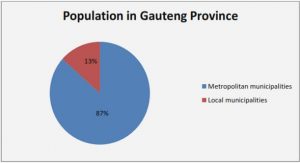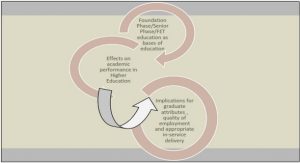Get Complete Project Material File(s) Now! »
Count Bobrinskiy (1826-1890)
Another active leader of the Pashkovite group was Count Alexey Pavlovich Bobrinskiy. He also came from a noble family and owned a large estate of Bogoroditsk in the Tul’skaya gubernia (now the estate is a large museum and park). During the Crimean War he was promoted to Colonel of the Corps of Nobles. From 1871 to 1874 he was a Minister of Ways and Roads. Fountain describes Count Bobrinskiy as a man of “colossal intellect” and deeply read in German philosophy (Fountain 1988:30). He was especially fond of the German philosopher Karl Robert Eduard von Hartmann (Corrado 2000:92). As a result he developed a deep scepticism almost to the point of nihilism (Karev 1999:128). Overall Bobrinskiy held liberal political views, was “a man of principle”, and very loyal to the tsar (Corrado 2000:92-93). Bobrinskiy’s conversion (like Radstock’s) was connected to his experience as an officer during the Crimean War, where he fell ill with typhus fever and almost died. After regaining consciousness, “he vowed that he would pray every day to the God he did not yet know”. His life was spared and for the next twenty years he prayed to “the unknown God” (Fountain 1988:30; Latimer 1908:80).
Count Bobrinskiy’s wife invited Lord Radstock to dinner where the two men met for the first time. Radstock, as usual, brought up the subject of the Gospel and referred to the Epistle to the Romans. Bobrinskiy challenged him with questions concerning some “contradictions” in the Bible. Lord Radstock asked him which particular contradictions he meant. That night Bobrinskiy stayed up late trying to compile the list but, as he recalled later, “every Bible verse that I brought forth to defend my opinion became an arrow against me, and in our conversation I received a clear impression of the power of the Holy Spirit. I could not explain what was happening to me, but I was born again from above” (Karev 1999:128). In this way a casual conversation with Lord Radstock “resulted in a flood of light such as arrested Paul on the Damascus road” (Latimer 1908:34). Bobrinskiy suddenly realised that “Jesus was the key, the beginning and the end of all. Falling on his knees in prayer, he sought mercy and forgiveness and knew straightaway that he was forgiven” (Fountain 1988:30-31).
From that moment in 1874 Bobrinskiy devoted his entire life and wealth to the cause of the Gospel. He opened his home for prayer meetings and Bible hours (Karev 1999:129). His estate in Bogoroditsk became a centre of agricultural and social improvement, but primarily a centre for the spreading of the Gospel (Fountain 1988:31). It seems that Bobrinskiy loved the country and spent most of his time at his estate where he held religious meetings until his death in 1894 (Corrado 2000:92). Another reason why Bobrinskiy concentrated his work in Tul’skaya gubernia may have been that he saw more opportunities there than in the capital where most state and church officials were located. Nevertheless, his activity did not go unnoticed by Orthodox opponents. Both Terletsky and Ornatsky pointed out that Count and Countess Bobrinskiy had carried out meetings with prayers, preaching, and singing in Bogorodsk (Terletsky 1891:75; Ornatsky 1903:9). According to Nichols, in 1881 Bobrinskiy, who had recently retired, succumbed to Pobedonostsev’s pressure and permanently moved to his Tula estate (Nichols 1991:66).
Korff wrote that whenever Bobrinskiy happened to be in St. Petersburg, he discussed the congregation’s matters with Pashkov and Korff.158 He would also hold eight o’clock meetings on Saturday evenings for young people and for those of “maturer years” (Latimer 1908:80). Occasionally Dr. Baedeker preached at Bobrinskiy’s St. Petersburg home (Latimer 1908:80-81). In 1877 Bobrinskiy distributed thousands of New Testaments at the Moscow Exhibition (Karev 1999:129). Chief Procurator Pobedonostsev complained to the tsar that Bobrinskiy and Pashkov had established a shelter for the poor with one condition, that they listen to their preaching (Pobedonostsev 1882:8). After his conversion experience Bobrinskiy looked no further for scientific proofs in the matter of his faith. Lev Tolstoy, a good friend of Bobrinskiy, was impressed by his sincerity and vital faith. Soon after his conversion Bobrinskiy visited Count Lev Tolstoy at Tolstoy’s estate Yasnaya Polyana. It is said that the two men on occasion spent eight hours on until six o’clock in the morning absorbed in the essential question of the revelation of God in Christ (Heier 2002:92).
Domus Ecclesiae—Social Setting for Establishing a Church
St. Petersburg’s revival of the 1870s took place primarily among the nobility who opened their palaces and mansions for meetings. Those homes literally became house churches. Newly-converted enthusiastic believers did not actually need church buildings because their own halls could cater to more than a thousand people. Furthermore, the owners were not the only people living in their palaces and mansions; armies of servants, sometimes relatives and friends sharing their homes all became quickly involved in the meetings. In this way, a prominent feature of the apostolic church—house churches—found its way into the early history of St. Petersburg evangelicals. For these newly converted Orthodox nobles the concept of church gradually changed from being an Orthodox cathedral to a gathering of believers. This experience turned out to be beneficial during the Soviet regime when believers could not own the needed number of church buildings. In this section of the paper the author will first concentrate on first-hand descriptions of people who attended those meetings. Then the author will analyse the social profile of the evangelical group as the aristocrats reached out to less fortunate people. After that the author will attempt to examine the theological and practical peculiarities of the group. Then the author will concentrate on their two main hallmarks, evangelism and philanthropy. Finally, the author will try to demonstrate how they reached out to similar evangelical groups beyond St. Petersburg.
Now, since the main “players” have been introduced in a previous section, the author can move towards discussing their ministry and theology. Naturally, there will be some overlaps with the material already presented, but from this point on the author can start summarising the whole picture of St. Petersburg Pashkovites.
CHAPTER ONE: INTRODUCTION
1.1 The Need for this Study
1.2 The Purpose of this Study
1.3 The Scope of this Study
1.4 The Design of the Study: Brief Description of the Chapters
1.5 Bibliographic Foreword on the History of Russian Evangelicalism
1.6 The Research Problems
CHAPTER TWO: METHODOLOGICAL STRATEGY
2.1 History
2.2 Hermeneutics
CHAPTER THREE: BACKGROUND AND INFLUENCES
3.1 Historical Context
3.2 Foreign Evangelical Influences
CHAPTER FOUR: RUSSIAN EVANGELICALS (1874-1929). A HISTORICAL PERSPECTIVE
4.1 The Rise and the Initial Stage of the Evangelical Movement in St. Petersburg (1874-1884)
4.2 The Development of the Evangelical Movement under Social Pressure (1884-1905)
4.3 The Growth of the Evangelical Movement during the Revolutionary and World War I Period (1905-1917)
4.4 “Golden Age” of the Russian Evangelicals (1917-1927)
CHAPTER FIVE: STUDY OF VITAL ASPECTS IN THE THEOLOGICAL HERMENEUTICS OF IVAN VENIAMINOVICH KARGEL (1849-1937)
5.1 Kargel’s Biographical Data in the Context of the Russian Evangelical Movement
5.2 Brief Review of Kargel’s Written Theological Heritage
5.3 Inductive study of Kargel’s hermeneutics
5.4 Theological Presuppositions in Kargel’s Hermeneutics
5.5 Pietism as the main “root” of Kargel’s hermeneutical strategy
CHAPTER SIX: SUMMARY AND CONCLUSIONS
6.1 Summary of the Discussion
6.2 Kargel’s hermeneutical guidelines
6.3 The Contribution of this Study
6.4 The Prospect for Further Study
BIBLIOGRAPHY
Sources and Literature
Articles
Dictionaries and encyclopedias
Electronic Sources
Archival Sources
Primary Sources on CDs
APPENDIX






